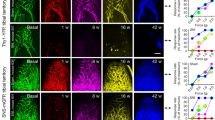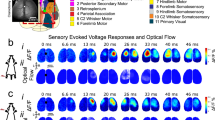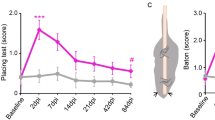Abstract
WHEN a peripheral nerve is cut across, the axons in the central end send out sprouts. If these sprouts fail to reach the distal part of the cut nerve they form a tangled mass called a neuroma1. Neuromas which occur in man after amputation or after failure of regeneration of a damaged nerve are always tender on pressure and are sometimes the source of ongoing pain2. When experimental neuromas are stimulated, it is known that a delayed volley of nerve impulses arrives at the central nervous system3 and it was assumed that the delay was occurring in the fine sprouts. Now that we have examined single fibres originating from a neuroma, we find that this conclusion was wrong and that there is a much more surprising explanation: only the small diameter, slowly conducting axons within the peripheral nerve seem to send sprouts into the neuroma and the delay in arrival of the afferent volley is primarily due to the fact that it runs only in slowly conducting fibres. This selective outgrowth of small fibres may be of considerable practical interest. These fibres include those which normally carry signals from injured tissue. In the normal situation, however, injury detection signals are accompanied by impulses in large diameter nerve fibres which decrease the central effect of the injury signals. The neuroma, as a pure culture of small fibres, may generate pain producing impulses3 where the pain has an intensity and peculiarly unpleasant quality due to the absence of the normal modulating impulses4 in the larger fibres which have failed to regenerate.
This is a preview of subscription content, access via your institution
Access options
Subscribe to this journal
Receive 51 print issues and online access
$199.00 per year
only $3.90 per issue
Buy this article
- Purchase on Springer Link
- Instant access to full article PDF
Prices may be subject to local taxes which are calculated during checkout
Similar content being viewed by others
References
Cajal, S. R., Degeneration and Regeneration in the Nervous System (Oxford University Press, London, 1928).
Sunderland, S., Nerves and Nerve Injuries (William and Wilkins, Baltimore, 1968).
Wall, P. D., and Gutnick, M., Nature, 248, 740–743 (1974).
Melzack, R., and Wall, P. D., Science, 150, 971–979 (1965).
Aitken, J. T., and Thomas, P. K., J. Anat., 96, 121–129 (1962).
Parnas, I., Hochstein, S., and Parnas, H., J. Neurophysiol. (in the press).
Author information
Authors and Affiliations
Rights and permissions
About this article
Cite this article
DEVOR, M., WALL, P. Type of sensory nerve fibre sprouting to form a neuroma. Nature 262, 705–708 (1976). https://doi.org/10.1038/262705a0
Received:
Accepted:
Issue Date:
DOI: https://doi.org/10.1038/262705a0
This article is cited by
-
Molecular mechanisms of mechanotransduction in mammalian sensory neurons
Nature Reviews Neuroscience (2011)
-
Administration of a Tropomyosin Receptor Kinase Inhibitor Attenuates Sarcoma-Induced Nerve Sprouting, Neuroma Formation and Bone Cancer Pain
Molecular Pain (2010)
Comments
By submitting a comment you agree to abide by our Terms and Community Guidelines. If you find something abusive or that does not comply with our terms or guidelines please flag it as inappropriate.



